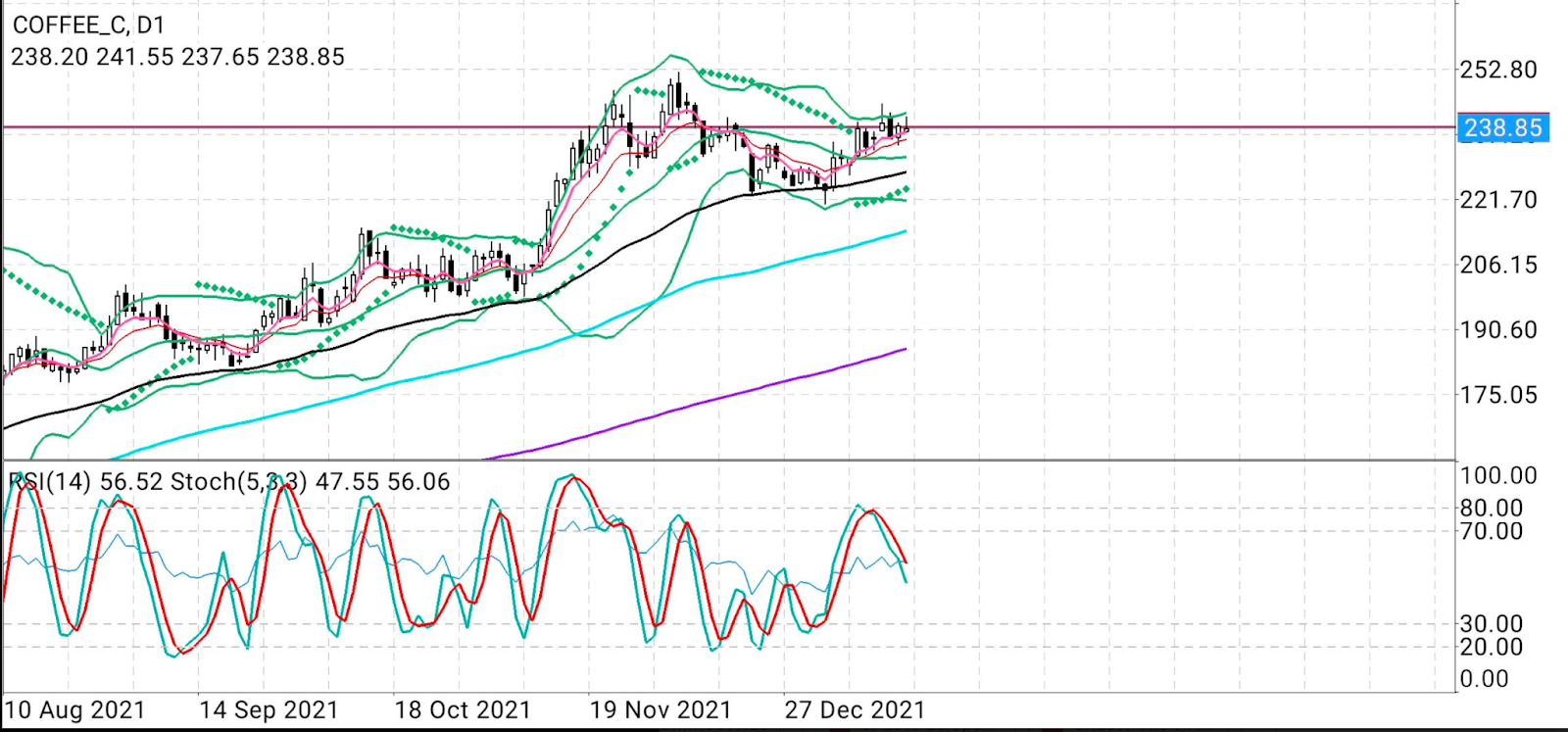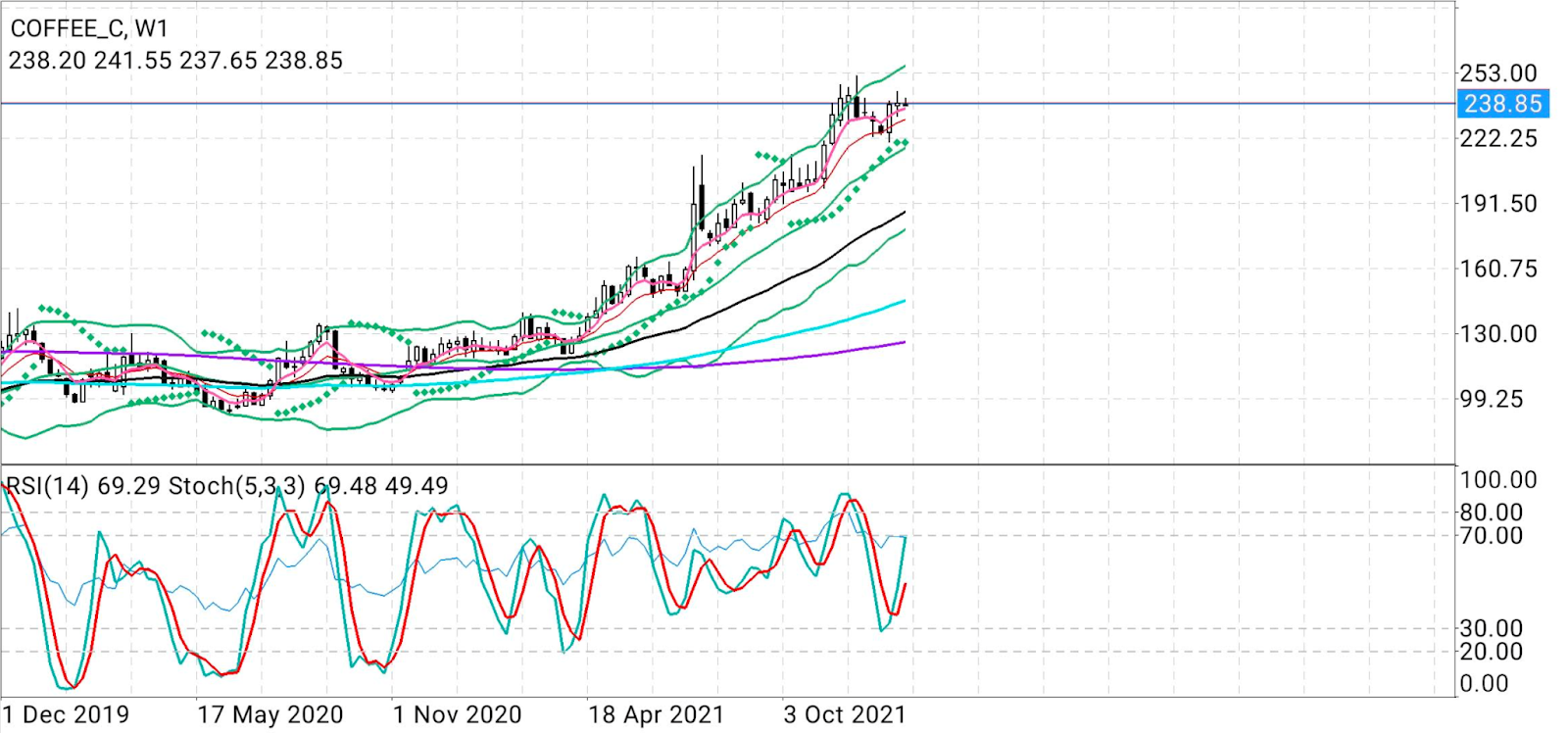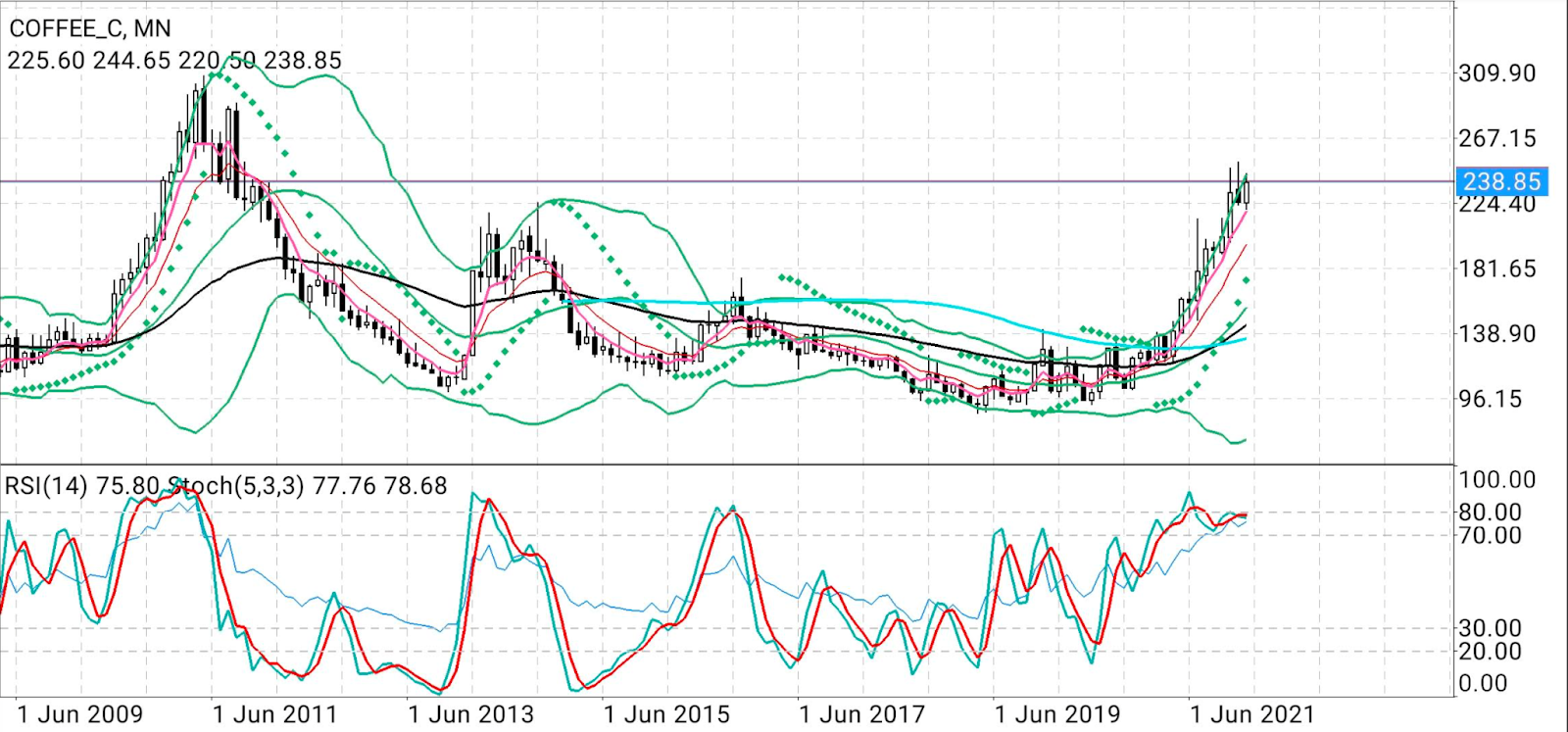The steaming arabica rally from last year has spilled over into January due to a squeeze in the supply of the premium coffee bean grown largely in Brazil.
Arabica is widely hailed as the king of coffee beans, consumed by 70% of the coffee-drinking world and ranks as the premium bean of choice for renowned coffee chains from Starbucks (NASDAQ:SBUX) to Restaurant Brands' (NYSE:QSR) owned Tim Hortons and Dunkin Donuts.
It finished up 76% last year, firstly due to production outages in COVID-hit farms and processing centers, and later from container constraints that made it hard to ship the bean out of Brazilian ports in time.
January-to-date, arabica is up another 6% on extended production and logistical problems, as well as inclement weather that has hurt crop prospects.

All charts courtesy of skcharting.com
“Containers are not available” for arabica farmers in Brazil to ship their beans, said Jack Scoville, chief crop analyst at Chicago’s Price Futures Group. He estimated that up to 82% of the Brazilian harvest had already been sold and demand remained strong for more beans from the region.
“The dry weather and then the freeze in Brazil have created a lot of problems for coffee trees to form cherries this year,” added Scoville. “Big rains more recently in some Brazil growing areas have hurt cherry formation as well.”
Fortunes of the New York-traded arabica contrast with those of London-traded robusta coffee, which is down 7% since the start of this year. Robusta is found in most instant coffee brands on the market and is a natural choice for decaffeinated coffee. Grown largely in Vietnam, robusta is having similar supply and crop issues as arabica, but without commensurate demand.
“Trends in London have turned down but trends in New York are still sideways or up,” Scoville said, explaining the market variance between the two bean types.
The coffee market as a whole swung from a surplus to a deficit of more than 5 million bags last year, according to Rabobank analysis reported by Fortune. Shipping constraints and uncertainty on when and how coffee would be transported triggered the untoward buying that led to the 2021 rally.

Rabobank had predicted that the “panic buying” in arabica would stop after Christmas, but also the wild card was the weather in Brazil, which was hit by dry weather in the earlier part of 2021 before a frost that followed.
Ole Hansen, head of commodity strategy at Saxo Bank, told CNBC in December that “a perfect storm of events [has been] conspiring to give our beloved bean a boost,” referring to arabica.
“The question for future price action is how much of these developments are potentially longer-lasting,” Hansen said.
“I think we need to focus on what’s been unfolding in Brazil. We’ve had a generational low in temperatures, a very quick spell of frost which hit some of the growing areas, and we’ve had a period of drought—this has left the 2022 crop in a bit of a precarious state.”
Hansen said adverse South American weather could even affect 2023 arabica yields.
“We saw coffee rally to about $3 per pound back in 2011, when we had another Brazil scare,” he said.
“These are really the kind of numbers that prompt the market to speculate whether we can reach those levels once again, and I think with Brazil in mind, and if the projections over the coming months continue to confirm a slowdown or reduction in output, then the risk of our brew getting more expensive is very real.”
“I think on balance we have a market which is, for the first time in years, starting to show some tightness,” Hansen added.

So, will arabica return to $3 per lb?
In Tuesday’s trade on ICE Futures US, a pound of arabica settled at $2.3960 per lb. That’s still a long way from $3.
But Sunil Kumar Dixit, chief technical strategist at skcharting.com and a regular contributor of commodity technicals to Investing.com, said arabica’s charts indicate a lot more technical steam left in the price.
Dixit noted that early December highs of $2.52 for arabica attracted profit booking by seasonal retail traders, pushing the market to the $2.20 level where value buying helped a bounce back to $2.44.
“Strong consolidation above $2.44 may now endorse upward momentum towards the December top of $2.52 and could extend this to $2.56 going into late February and mid-March,” he said.
Drilling into chart details, he explained that arabica’s weekly chart showed a significant rebalancing and a so-called stochastic reading of 69/49 that reflected positivity, with a crossover testing the Relative Strength Index at 69.
But like all uptrends that break, arabica had its vulnerable point under $2.32, he said.
“Breaking below $2.32 can weaken the momentum and may trigger a short-term correction that targets the horizontal support level of $2.20, which is also a caution point for extended corrections,” added Dixit.
Disclaimer: Barani Krishnan uses a range of views outside his own to bring diversity to his analysis of any market. For neutrality, he sometimes presents contrarian views and market variables. He does not hold a position in the commodities and securities he writes about.
